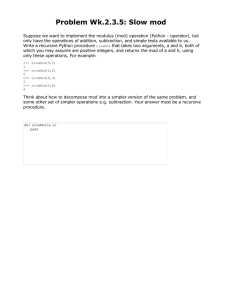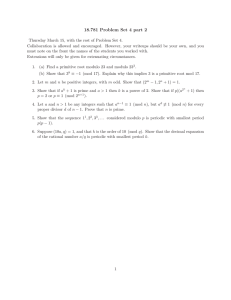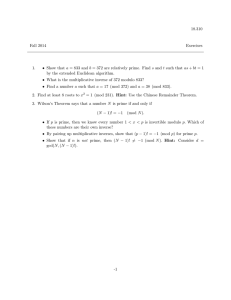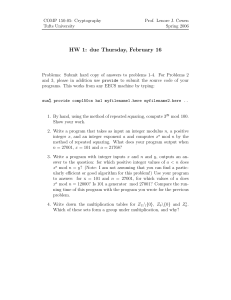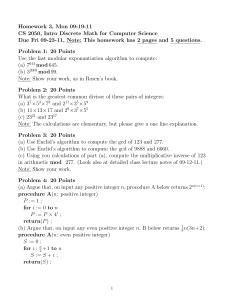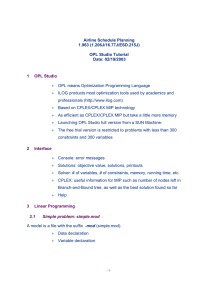18.781 Practice Questions for Final Exam
advertisement
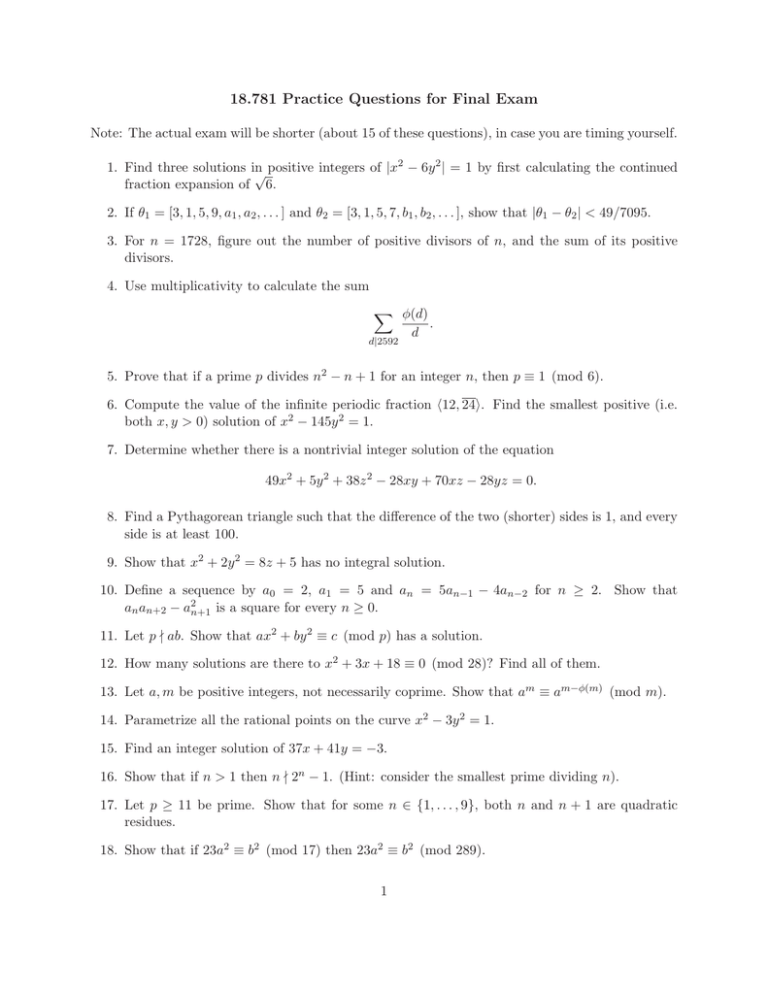
18.781 Practice Questions for Final Exam
Note: The actual exam will be shorter (about 15 of these questions), in case you are timing yourself.
2
2
1. Find three solutions in
√ positive integers of |x − 6y | = 1 by first calculating the continued
fraction expansion of 6.
2. If θ1 = [3, 1, 5, 9, a1 , a2 , . . . ] and θ2 = [3, 1, 5, 7, b1 , b2 , . . . ], show that |θ1 − θ2 | < 49/7095.
3. For n = 1728, figure out the number of positive divisors of n, and the sum of its positive
divisors.
4. Use multiplicativity to calculate the sum
φ(d)
.
d
d|2592
5. Prove that if a prime p divides n2 − n + 1 for an integer n, then p ≡ 1 (mod 6).
6. Compute the value of the infinite periodic fraction 12, 24. Find the smallest positive (i.e.
both x, y > 0) solution of x2 − 145y 2 = 1.
7. Determine whether there is a nontrivial integer solution of the equation
49x2 + 5y 2 + 38z 2 − 28xy + 70xz − 28yz = 0.
8. Find a Pythagorean triangle such that the difference of the two (shorter) sides is 1, and every
side is at least 100.
9. Show that x2 + 2y 2 = 8z + 5 has no integral solution.
10. Define a sequence by a0 = 2, a1 = 5 and an = 5an−1 − 4an−2 for n ≥ 2. Show that
an an+2 − a2n+1 is a square for every n ≥ 0.
11. Let p ab. Show that ax2 + by 2 ≡ c (mod p) has a solution.
12. How many solutions are there to x2 + 3x + 18 ≡ 0 (mod 28)? Find all of them.
13. Let a, m be positive integers, not necessarily coprime. Show that am ≡ am−φ(m) (mod m).
14. Parametrize all the rational points on the curve x2 − 3y 2 = 1.
15. Find an integer solution of 37x + 41y = −3.
16. Show that if n > 1 then n 2n − 1. (Hint: consider the smallest prime dividing n).
17. Let p ≥ 11 be prime. Show that for some n ∈ {1, . . . , 9}, both n and n + 1 are quadratic
residues.
18. Show that if 23a2 ≡ b2 (mod 17) then 23a2 ≡ b2 (mod 289).
1
19. Calculate the product
α (2
− α), where α runs over the primitive 14’th roots of unity.
20. Let f be a multiplicative function with f (1) = 1, and let f −1 be its inverse for Dirichlet
convolution. Show that f −1 is multiplicative as well, and that for squarefree n, we have
f −1 (n) = μ(n)f (n).
2
MIT OpenCourseWare
http://ocw.mit.edu
18.781 Theory of Numbers
Spring 2012
For information about citing these materials or our Terms of Use, visit: http://ocw.mit.edu/terms.

